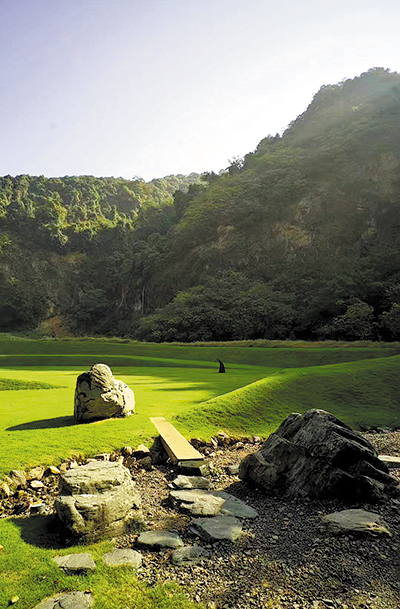Call of the wild
The site of an abandoned mine on a mountainside near Hangzhou has been transformed into a garden, Xu Haoyu reports.
By Xu Haoyu | China Daily | Updated: 2023-12-16 12:41

Closer ties with nature
While explaining their architectural philosophy, Yu says: "We integrated the buildings into the forests in such a way that they seem to dissolve into the surroundings."
A key feature in the garden is a reflective water pool set in the main space. As the sun sets, its rays bathe the cliff in a kaleidoscope of colors, with the mountain's reflection mirrored in the pool.
"We aimed to bring nature even closer," Yu says.
This intent is evident in their bold decision to incorporate a large natural rock into the indoor space. Recalling the challenging process, Yu mentions that it took seven or eight people wielding crowbars and coordinating their efforts to move the rock to the desired spot.
In a secluded corner of the garden, there's a narrow entrance leading to a space where a thin vertical window has been artfully placed. Outside the window, a red maple tree has been planted, offering a picturesque view reminiscent of an ancient scroll painting.
Yu elaborates on the significance of windows in their design. "Windows are the eyes of a building. Good spaces are often created around windows. With a window comes light, and with light, a view."
Walking along the stone pathway, visitors come across a hidden door leading to a tearoom. A striking feature of this room is a window approximately 7 meters long, framing the mountain landscape opposite.
Yu says that through this project, they also hoped to reflect the changing relationship between humans and nature.
"In the past, people lived in harmony with the natural world. They could step outside to see mountains and cross rivers. However, the rapid pace of urbanization has disrupted this connection," he says.
The issues of landslides and flooding, as encountered on their site, are stark reminders of the consequences of human activities disrupting natural systems.
Therefore, when they began work on Shan Shan Garden, their primary goal was environmental restoration. They aimed to reverse some damage caused by human intervention and restore a balance with nature.
"Our approach involves utilizing our technical expertise to solve certain issues, and then allowing nature to take its course," Yu says.
























